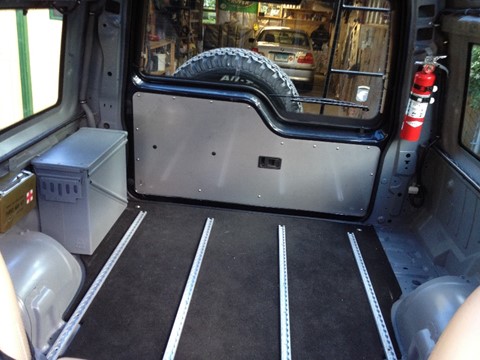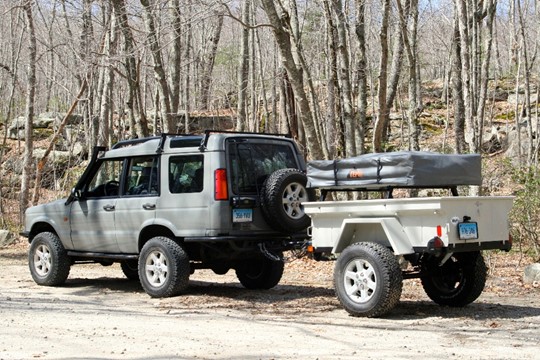1. If Land Rover made an aircraft would you fly in it? Why/Why Not?
Of course. How could shoddy electronics or dissimilar metals corrosion possibly effect the safety and reliability of an aircraft?
2. Tell us a little about your background, your career and where you live.
I live in West Hartford, CT with my wife Rae. I make my living flying a Dassault Falcon 50 business jet out of the Boston area.

My first off-roading experiences were with the US Army while assigned to an Air Cavalry unit, in many of their slung loaded ¼ ton M151’s. Over the years I’ve owned a Jeep, a Bronco, and a Blazer, spending most of the off road time on the beaches of RI and MA.
In 2009 we bought our ’04 Disco, totally stock. After one trip to the Winter Romp, I was hooked, and slowly started to bolt aftermarket things onto and into it.

3. How many Land Rovers have you owned and which was your favorite?
Just the Disco as of now, but we are considering obtaining a second one – to keep stock, clean, and running.
My favorite however would be the RHD Defender I was able to wheel at the LR Experience / West Country facility while on a trip over in the UK.
4. What’s the best thing about owning a Land Rover?
Being able to go anywhere, whenever, in a New England snow storm.
And of course, other LR owners / friends.
5. What’s the worst thing about owning a Land Rover?
Trouble shooting new noises, lights, leaks, and alarms.
6. Been on an adventure? – tell us about it
November ’11. MA’s Old Florida Road (FYI – We just added this trail to the 2015 Muddy Chef Challenge, you have been warned! LOL), with the Bay State Rover Owners group. 12 hours to finish the four or so mile course, and then the winter drive home without fwd sunroof glass and a very bent track rod.

7. How do you plan to beat the competition this year at the Muddy Chef Challenge?
I’ve seen firsthand the competition from last year. I do not plan to beat any of them.
8. If you could ask Land Rover for a particular type of vehicle what would it be?
A Disco or Defender type model that a Chevy small block could easily bolt into.
9. What upgrades/modifications does your Land Rover have?
Snorkle, HD suspension, steel bumpers/sliders, winch, aux lights, EasyPass, inline Chevy thermo mod, aft cargo conversion, new ‘old school’ Rover paint, and latest, a rebuilt ’67 Army ¼ trailer for the tent and gear.



10. If you were on safari what three people (living or dead) would you pick to bring along?
Vladimir Putin, Sir Edmund Hillary, and Bewitched’s Dr. Bombay. Then let the campfire banter begin.
And Kate Upton, assuming she’s off Keenan’s safari by now.








 than any corn-based whiskey.
than any corn-based whiskey.


